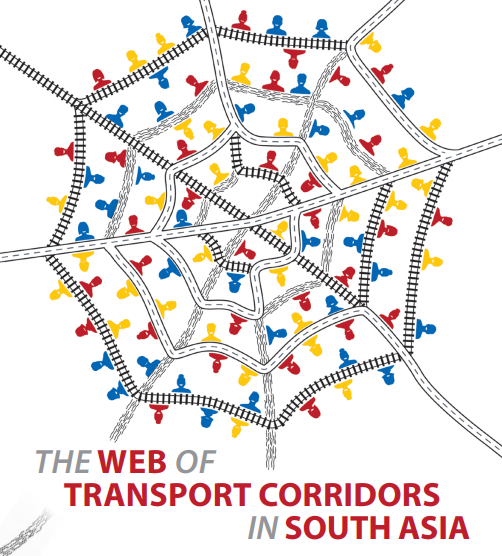Summary:
- A recent World Bank report says transport corridors will offer enormous potential to boost South Asia's economic growth, reduce poverty, and spur job creation;
- However, the 'The Web of Transport Corridors in South Asia' report warns they could cost trillions of dollars to implement, far exceeding the financing resources available;
- The World Bank says countries need to prioritise the most promising corridors that will deliver transformative impacts on economies and people;
- The report advocates for a holistic design of corridor programmes that actively manages trade-offs and closes financing gaps.
The report 'The Web of Transport Corridors in South Asia' - jointly produced with the Asian Development Bank, the United Kingdom's Department for International Development, and the Japan International Cooperation Agency - argues that the many transport corridors proposed across Asia would cost trillions of dollars to implement, far exceeding the financing resources available.
Hence, countries need to prioritise the most promising corridors that will deliver transformative impacts on economies and people - or, in the terms of the title of the report, will offer wider economic benefits. And while engineering designs and geopolitical considerations are important factors in the decision, sound economic analysis is key to designing truly successful corridors, the report notes.
"The largest economic gains from investing in transport corridors may arise from urbanisation and job creation around this new infrastructure, rather than from many more vehicles using it," said one of the report's authors, World Bank lead economist Martin Melecky, who added: "Corridor investments involve significant trade-offs and are not all equally successful in creating large economic surpluses that spread fairly throughout society."
The report reviews the international experience with economic corridors, from the Pacific Ocean Belt in Japan in the 1960s to high-speed train networks in Europe more recently. It also analyses the impacts of the Golden Quadrilateral highway system in India and finds positive effects, including higher economic activity and better jobs for women. However, air pollution rose in parallel and gains in household consumption were not equally shared across connected districts.
Ultimately, the ability of transport corridors to spur structural transformation along the way depends on complementary factors to improve local conditions for the new infrastructure to boost job creation and to generate tax revenues that can cover the cost of the investments.
READ THE FULL REPORT... The Web of Transport Corridors in South Asia
The Web of Transport Corridors in South Asia
Considering the international evidence and specific analyses for South Asia, the report advocates for a holistic design of corridor programs that actively manages trade-offs and closes financing gaps.
South Asia abounds with new proposals to build a vast network of transport corridors. For example, in India alone - and likely bolstered by the successful completion of the Golden Quadrilateral (GQ) highway system - several transport proposals extending beyond India's borders are now under consideration.
They include the International North-South Transport Corridor (INSTC), linking India, Iran and Russia, the Asia-Africa Growth Corridor, and the Bangladesh, China, India, and Myanmar (BCIM) economic corridor. The hope is that these transport corridors will turn into growth engines and create large economic surpluses that can spread throughout the economy and society.
The World Bank identifies the surface link between Shanghai and Mumbai as arguably, the transport corridor with the greatest economic potential. These two cities are the economic hubs of China and India respectively, two emerging global powers and the distance between them, about 5,000 kilometers, is not much greater than the distance between New York and Los Angeles.
A corridor from Shanghai to Mumbai - via Kunming, Mandalay, Dhaka, and Kolkata- would go through some of the most densely populated and most dynamic areas in the world, stoking hopes of large economic spillovers along its alignment.